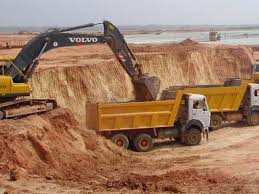What is Earthworks?
Earthworks encompass the broad range of activities involved in moving, manipulating, and shaping earth materials, often to prepare a site for construction or landscaping. This process involves tasks like excavation, grading, and embankment, which are crucial for creating a solid foundation for various projects.
History and Evolution
The concept of terrassement 95 dates back to ancient civilizations where early engineers and laborers shaped the land for agricultural purposes, fortifications, and urban development. Over time, as technology and engineering practices evolved, so did the methods and tools used in earthworks, significantly enhancing efficiency and precision.
Types of Earthworks
Excavation
Excavation is the process of removing earth materials from a site to create space for construction or to extract resources. This can range from digging trenches for utilities to creating large pits for foundations. Modern excavation uses sophisticated machinery to improve speed and accuracy.
Embankment
An embankment involves building up earth to create a raised structure, such as a road or dam. This process often requires careful compaction and layering to ensure stability and prevent settling. Embankments are crucial in controlling water flow and supporting infrastructure.
Grading
Grading is the process of leveling and sloping the ground to prepare it for construction. It involves cutting and filling to create a smooth, stable surface. Proper grading ensures effective drainage and prevents erosion, which is essential for the longevity of any construction project.
Cut and Fill Grading
Cut and fill grading involves cutting away high areas of the site and filling low areas to create a level surface. This technique is often used in large-scale projects where significant elevation changes are required. It balances the earth moved, reducing the need for additional materials and minimizing environmental impact.
Applications of Earthworks
Construction Projects
In construction, earthworks are foundational to creating stable sites for buildings, roads, and other structures. From preparing a site for a new office building to laying the groundwork for a highway, earthworks are integral to the development process.
Landscaping and Site Development
Landscapers and developers use earthworks to shape the land for aesthetic and functional purposes. This includes creating slopes, ponds, and terraces, which enhance the visual appeal and usability of outdoor spaces.
Environmental and Agricultural Uses
Earthworks also play a role in environmental management and agriculture. Techniques like terracing can prevent soil erosion on slopes, while earth-moving equipment helps manage and improve soil conditions for farming.
Tools and Equipment for Earthworks
Excavators
Excavators are versatile machines used for digging, lifting, and moving earth. They come in various sizes and types, from mini excavators for small jobs to large hydraulic excavators for heavy-duty tasks.
Bulldozers
Bulldozers are powerful machines equipped with a large blade for pushing earth, debris, and other materials. They are essential for leveling ground and moving large volumes of material efficiently.
Loaders
Loaders are used to scoop, carry, and transport materials like soil, gravel, and sand. They come in different types, including wheel loaders and track loaders, each suited for specific tasks.
Skid-Steer Loaders
Skid-steer loaders are compact machines with a unique turning mechanism that allows them to maneuver in tight spaces. They are ideal for small to medium-sized projects where precision and versatility are required.
Techniques and Best Practices
Surveying and Planning
Effective earthworks begin with thorough surveying and planning. Accurate site analysis helps determine the most efficient methods and tools for the job, ensuring that the project meets its design specifications and adheres to regulations.
Safety Considerations
Safety is paramount in earthworks due to the heavy machinery and potential hazards involved. Proper training, safety gear, and adherence to safety protocols help prevent accidents and ensure a safe working environment.
Environmental Impact
Earthworks can have significant environmental impacts, including soil erosion, habitat disruption, and water pollution. Implementing practices like erosion control and proper waste management can mitigate these effects and promote environmental sustainability.
Erosion Control
Erosion control involves techniques to prevent soil loss and degradation, such as planting vegetation, using silt fences, and implementing proper grading practices. These measures help protect the land and maintain its integrity.
Challenges in Earthworks
Soil Conditions
Soil conditions can vary widely, affecting how earthworks are performed. Factors like soil type, moisture content, and compaction characteristics must be considered to ensure stability and prevent issues such as settling or shifting.
Weather Conditions
Weather conditions play a crucial role in earthworks. Rain, snow, and extreme temperatures can impact the efficiency and safety of earth-moving operations. Planning and adjusting work schedules according to weather forecasts can help mitigate these challenges.
Project Management
Effective project management is essential for coordinating earthworks activities, managing resources, and ensuring that projects stay on schedule and within budget. Proper planning, communication, and oversight are key to successful project execution.
Future Trends in Earthworks
Technology Integration
The integration of technology in earthworks is transforming the industry. Innovations like GPS-guided machinery, drones, and automated systems are improving precision, efficiency, and safety, making earthworks more effective and less labor-intensive.
Sustainable Practices
Sustainability is becoming increasingly important in earthworks. Practices such as recycling materials, reducing waste, and minimizing environmental impact are gaining prominence as the industry seeks to reduce its ecological footprint.
Conclusion
Earthworks play a vital role in shaping the land for various purposes, from construction and landscaping to environmental management. Understanding the different types of earthworks, tools, techniques, and best practices is essential for successful project execution. As technology and sustainable practices continue to evolve, the field of earthworks will undoubtedly advance, offering new opportunities and challenges for professionals in the industry.



